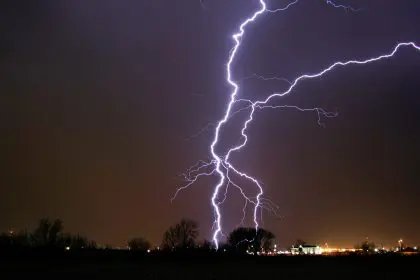2nd Largest Island in the Caribbean: Hispaniola
My trip to the Dominican Republic and Haiti was something I had been looking forward to for some time as I arrived on the island Hispaniola, formerly Española, part of the Greater Antilles archipelago, now divided by these two republics in the Caribbean region. European nations competed for control of this island in the New World, in the Caribbean as well as in North America. France and Spain settled their hostilities on this island by the Treaty of Ryswick in 1697 and divided Hispaniola between them. As a gateway to the Caribbean, Hispaniola became a haven for pirates during the early colonial period. Both Haiti and the Dominican Republic remain stark contrasts to each other, residing on one island with two distinct cultures and traditions that has added to differences despite being essential being one people with ethnic variances depending on which side of the island they are located.
I first arrived in the capital city of Santo Domingo on the Dominican Republic portion of my trip, regarded as the oldest European city in the New World that has a population of one million residents and an obvious Spanish colonial splendor. Having read about the Dominican Republic many years ago, I had this image of a classic “Banana Republic” with its tropical allure and melting pot population which did not make me deviate from my previous perceptions. Santo Domingo traffic is some of the most congested I have ever seen with horns blaring along streets lined with palm trees, a nice ocean breeze and a Third World charm.
Santo Domingo was the seat of Spanish rule in the Caribbean reflected in the many cathedrals, forts and Spanish colonial icons around the city. Christopher Columbus, who arrived on Dec. 5, 1492, during the first of his four voyages to the Americas, claimed the land for Spain and named it La Espanola. Columbus’ older brother, Bartholomew, “founded” the capital city of Santo Domingo around 1496. Slavery was one of the bedrocks of this colonial economy based upon cattle ranching or beef producing plantation economy with a free labor force that was treated less antagonistic than a sugar producing slave economy as in Haiti where antagonism and treatment was more extreme. In cattle ranching, the “master” and “slave” both rode horses and had to work in unison which developed somewhat of a different relationship between black and white, resulting in a lot of race-mixing in the Dominican Republic that is reflected in the faces of all hues of Dominicans. Though some Dominicans recognize their connection to Africa, most look to Spain as the mother country creating a culture of “Hispanicity” especially evident during the era of President Rafael Trujillo (1930-1961); a cruel mulatto dictator who promoted all things related to the “Spanish” way of life and displayed an anti-Haitian sentiment. The Dominican Republic celebrates its independence from Haiti not Spain due to Haiti’s 20-year occupation starting in 1822 and ethnic cultural differences that had a profound impact on Dominican national identity.
The people of the Dominican Republic are a spectrum of varied colors — a true rainbow coalition. They are a wonderful, vibrant Spanish speaking people who seem to enjoy the simple things in life such as family time, enjoying beach time at the various places around town like city beach Boca Chica; the tourists enjoy exclusive resorts in places like Punta Cana and excursions to an isolated Playa Rincon Beach. One of my favorite dishes to try in DR was Sancocho — a meat and vegetable stew indigenous to the Dominican Republic. I also tried a dish that has a direct African origin called Mondongo, a beef tripe soup with a mangu or mashed, boiled plantain also known as fufu. The landscape of the Dominican Republic is absolutely beautiful and made me understand why the Dominican Republic is one the most visited destinations in the Caribbean. I also stayed at the Barcelo Bavaro Beach Resort in Punta Cana for a few days and though I have traveled all over the world, I must say this was the best staff, facility, food, nightly shows, shopping areas and beach that I have ever been to. Special thanks to Martha Martinez (wait staff) and Rafael (bellboy) with Barcelo Bavaro Beach Resort –Adult only section who took care of my every need, Olga Vargas of Amstar for the tours and especially Nacho and Martin of Bavaro Runners Tour Company in Punta Cana.
Departing the Dominican Republic for Haiti, I felt mixed emotions. On one hand, I felt great Black pride in Haiti’s triumphant Black revolutionary past as the first Black colony in the new world to have a successful “slave” uprising that liberated itself from their former French colonial masters, but on the other hand I thinking about the devastation of the 7.0 earthquake in 2010 and the overwhelming poverty after the quake. Haiti was already the poorest country in the Western Hemisphere, in part due to 1 billion dollars paid to France for recognition as an independent country that bankrupted the Treasury and some corrupt leaders. Two hundred twenty thousand Haitians lost their lives during the earthquake that also left one and half million homeless but Haitians showed the same resiliency displayed by Haiti’s Founding Fathers in establishing the 1st Black Republic in the “New World” with the beautiful universally hued, resilient French Creole speaking Haitians today as they persevere in trying times. Haiti is the birthplace of the Black experience in the Americas with a current population of 10.4 million.
My interest in going to Cap Haitian was because this was the birthplace of what would become the Haitian Revolution and the monuments of Haiti’s black generals and leaders can be seen throughout this wonderful city. There I also enjoyed dishes like the classic Haitian patty made of ground beef, salt cod, smoked herring, chicken and ground turkey accompanied by Haitian spices and Du riz a sauce-pois- rice with bean sauce. Cap Haitien was not affected as much as Haiti’s capital, Port au Prince during the earthquake in 2010. In Cap Haitien, you don’t see the European colonizers on display like in the Dominican Republic but Black Men who defeated the French in war to end slavery and colonization.
I remember reading about Haitian General Toussaint L’ Overture many years ago, who was a former slave that became leader of the Haitian Revolution. He was a military genius whose political acumen transformed an entire country of enslaved blacks into what would become the independent state of Haiti. Though under his leadership at the time, Haiti was still recognized as a colony of France but was free of slavery. The French tricked L ’Overture by kidnaping him during a diplomatic meeting between the two countries and transporting him to prison in France where he would die two years later. However, L ‘Overture paved the way for his successor Jean Jacques Dessalines — both were former slaves — who would go on to defeat the French in a war that shook the institution of slavery throughout the world. The historical monuments to Dessalines and others located in Vertiere near Cap Haitien were impressive and the Citadel, built by Dessalines’ successor Henri Christophe with 20,000 men, was awe-inspiring. No foreign invader would ever test the walls of the Citadel.
On Jan. 1, 1804, Dessalines would declare Haiti’s Independence with this momentous statement for any future aggression by France to re-colonize Haiti and reinstate slavery, “Let them tremble when they approach our coast, if not for the memories of the atrocities they perpetrated here but from the terrible resolution we will have made to put to death anyone born French, whose profane foot soils the Land of Liberty”. Much of the world would not initially recognize Haiti’s independence and US President Thomas Jefferson called Haiti’s revolutionary heroes, “Cannibals of the Terrible Republic” simply because Black men defeated their white colonial masters in war. Special thanks to Kenneth Kwame Welsh of Atlanta Segments of Welsh Information Services LLC for the Haitian technical support. What a journey of discovery for me to visit both of these two wonderful countries in contrast on the Isle of Hispaniola. –malik ismail
Malik Ismail is an international traveler, historian and activist. He’s explored many cultures in Africa including Ghana, South Africa and Egypt. He’s traveled to Cuba and South America. He visited Rio de Janeiro and Salvador Bahia, Brazil including the favelas of Rocinha and Cidade de Deus (City of God) in Rio and most recently visited the Dominican Republic and Haiti. A former Panther Minister of Information (NPVM) whose writings have been featured in the L.A. Watt’s Times, It’s About Time BPP Newsletter, rolling out magazine and The Black Panther International News Service. Email: [email protected]













